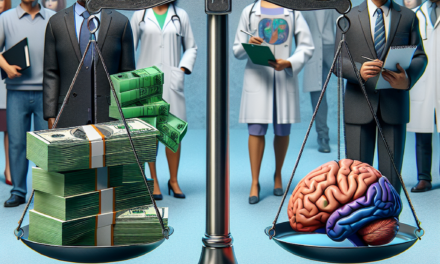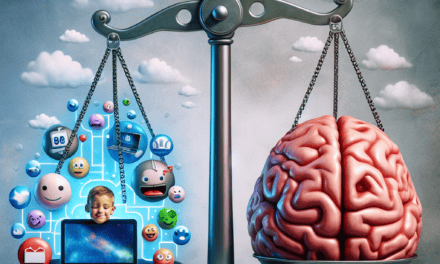Urgent Need for Systematic Reform in Eating Disorder Treatment
Eating disorders are complex mental health conditions that affect millions of individuals worldwide. Despite the growing awareness of these disorders, the treatment landscape remains fragmented and often inadequate. This article explores the urgent need for systematic reform in eating disorder treatment, focusing on five critical areas: accessibility of care, integration of services, evidence-based practices, the role of technology, and the importance of a holistic approach. Each section will delve into the current state of treatment, the challenges faced, and potential solutions to improve outcomes for those affected by eating disorders.
1. Accessibility of Care
Accessibility to care is one of the most pressing issues in the treatment of eating disorders. Many individuals face significant barriers that prevent them from receiving timely and effective treatment. These barriers can be categorized into financial, geographical, and social factors.
Financial Barriers
One of the most significant obstacles to accessing treatment is the cost associated with care. Many insurance plans do not adequately cover the expenses related to eating disorder treatment, which can include therapy, medical care, and nutritional counseling. According to the National Eating Disorders Association (NEDA), only 30% of individuals with eating disorders receive treatment, often due to financial constraints.
- High Treatment Costs: Inpatient and outpatient programs can be prohibitively expensive, with costs ranging from $500 to $2,000 per day.
- Insurance Limitations: Many insurance companies impose strict limitations on the duration and type of treatment covered, leading to inadequate care.
- Lack of Financial Assistance: While some organizations offer scholarships or financial aid, these resources are often limited and not widely advertised.
Geographical Barriers
Geographical location plays a crucial role in determining access to care. Individuals living in rural or underserved areas may have limited options for specialized treatment. A study published in the journal Psychiatric Services found that individuals in rural areas are less likely to receive appropriate care compared to their urban counterparts.
- Limited Treatment Facilities: Many regions lack specialized eating disorder treatment centers, forcing individuals to travel long distances for care.
- Transportation Issues: For those without reliable transportation, accessing treatment can be a significant challenge.
- Telehealth Limitations: While telehealth has expanded access, not all individuals have the necessary technology or internet access to participate in virtual care.
Social Barriers
Social stigma surrounding eating disorders can also deter individuals from seeking help. Many people fear judgment or misunderstanding from friends, family, or healthcare providers, which can lead to isolation and reluctance to pursue treatment.
- Stigma and Misunderstanding: Many people still view eating disorders as a choice rather than a serious mental health condition.
- Lack of Awareness: There is often a lack of awareness about the signs and symptoms of eating disorders, leading to delayed diagnosis and treatment.
- Fear of Disclosure: Individuals may fear that seeking help will lead to unwanted attention or scrutiny from their social circles.
To address these accessibility issues, systemic reforms are needed. This includes advocating for better insurance coverage, increasing the number of treatment facilities in underserved areas, and implementing public awareness campaigns to reduce stigma and promote understanding of eating disorders.
2. Integration of Services
Eating disorders often co-occur with other mental health conditions, such as anxiety, depression, and substance use disorders. However, the treatment of these co-occurring conditions is frequently disjointed, leading to suboptimal outcomes for patients. The integration of services is essential for providing comprehensive care that addresses the multifaceted nature of eating disorders.
The Importance of Integrated Care
Integrated care involves the coordination of various healthcare services to provide a holistic approach to treatment. This model recognizes that eating disorders do not exist in isolation and that effective treatment must address both the eating disorder and any co-occurring mental health issues.
- Collaborative Treatment Teams: An integrated approach involves a team of healthcare professionals, including therapists, dietitians, and medical doctors, working together to create a cohesive treatment plan.
- Continuity of Care: Integrated services ensure that patients receive consistent care across different providers, reducing the risk of gaps in treatment.
- Improved Outcomes: Research has shown that integrated care models lead to better treatment outcomes, including reduced symptoms and improved quality of life.
Challenges to Integration
Despite the benefits of integrated care, several challenges hinder its implementation. These include a lack of communication between providers, differing treatment philosophies, and logistical issues related to coordinating care.
- Provider Communication: Effective communication between different healthcare providers is essential for integrated care, but many providers work in silos, leading to fragmented treatment.
- Diverse Treatment Approaches: Different providers may have varying philosophies regarding treatment, which can create confusion for patients and hinder collaboration.
- Logistical Barriers: Coordinating appointments and treatment plans across multiple providers can be challenging for patients, particularly those with limited resources.
To promote integrated care, healthcare systems must prioritize collaboration among providers, establish clear communication channels, and develop standardized treatment protocols that address both eating disorders and co-occurring conditions. Training programs for healthcare professionals should also emphasize the importance of integrated care in treating eating disorders.
3. Evidence-Based Practices
The treatment of eating disorders has evolved significantly over the years, with a growing emphasis on evidence-based practices. However, many treatment programs still rely on outdated or unproven methods, leading to ineffective care. The adoption of evidence-based practices is crucial for improving treatment outcomes and ensuring that patients receive the best possible care.
Defining Evidence-Based Practices
Evidence-based practices are interventions that have been scientifically tested and proven effective through rigorous research. In the context of eating disorder treatment, this includes therapies such as Cognitive Behavioral Therapy (CBT), Dialectical Behavior Therapy (DBT), and Family-Based Therapy (FBT).
- Cognitive Behavioral Therapy (CBT): CBT is a widely used therapeutic approach that focuses on identifying and changing negative thought patterns and behaviors associated with eating disorders.
- Dialectical Behavior Therapy (DBT): DBT is particularly effective for individuals with co-occurring emotional dysregulation and eating disorders, emphasizing mindfulness and emotional regulation skills.
- Family-Based Therapy (FBT): FBT involves the family in the treatment process, empowering them to support the individual in their recovery journey.
The Gap in Implementation
Despite the availability of evidence-based practices, many treatment centers do not implement these approaches consistently. A survey conducted by the Academy for Eating Disorders found that only 50% of treatment facilities reported using evidence-based practices in their programs.
- Lack of Training: Many providers lack the necessary training to implement evidence-based practices effectively, leading to reliance on outdated methods.
- Resistance to Change: Some treatment centers may be resistant to adopting new practices due to established routines or skepticism about the efficacy of newer approaches.
- Funding Limitations: Implementing evidence-based practices often requires additional resources for training and program development, which may not be available in all facilities.
To address these gaps, it is essential to promote the importance of evidence-based practices through training programs, funding initiatives, and accreditation standards that prioritize the use of scientifically validated interventions in eating disorder treatment.
4. The Role of Technology
Technology has the potential to revolutionize the treatment of eating disorders by increasing accessibility, enhancing engagement, and providing innovative therapeutic options. However, the integration of technology into treatment is still in its infancy, and there is a pressing need for systematic reform to fully leverage its benefits.
Telehealth and Remote Support
Telehealth has emerged as a valuable tool for providing care to individuals with eating disorders, particularly during the COVID-19 pandemic. Remote therapy sessions allow patients to access treatment from the comfort of their homes, reducing barriers related to transportation and geographical location.
- Increased Accessibility: Telehealth can reach individuals in rural or underserved areas who may not have access to specialized treatment facilities.
- Flexibility: Remote sessions offer greater flexibility in scheduling, making it easier for patients to fit therapy into their lives.
- Continuity of Care: Telehealth can help maintain continuity of care during transitions or disruptions, such as moving to a new location or during public health crises.
Digital Therapeutics and Apps
In addition to telehealth, digital therapeutics and mobile applications are emerging as complementary tools for eating disorder treatment. These technologies can provide patients with resources, support, and self-monitoring tools to aid in their recovery.
- Self-Monitoring Tools: Apps that allow users to track their eating habits, emotions, and progress can promote self-awareness and accountability.
- Support Communities: Online support groups and forums can provide individuals with a sense of community and connection, reducing feelings of isolation.
- Educational Resources: Digital platforms can offer educational materials and coping strategies to empower individuals in their recovery journey.
Challenges and Considerations
While technology offers promising solutions, several challenges must be addressed to ensure its effective integration into eating disorder treatment. These include concerns about privacy, the need for digital literacy, and the potential for technology to exacerbate unhealthy behaviors.
- Privacy Concerns: Patients may be hesitant to share personal information through digital platforms due to fears of data breaches or lack of confidentiality.
- Digital Literacy: Not all individuals have the necessary skills or access to technology to benefit from digital interventions.
- Risk of Unhealthy Behaviors: Some apps may inadvertently promote unhealthy behaviors or comparisons, particularly in the context of body image and weight.
To maximize the benefits of technology in eating disorder treatment, it is essential to develop guidelines for ethical use, ensure patient privacy, and provide training for both patients and providers on how to effectively utilize these tools in a supportive manner.
5. The Importance of a Holistic Approach
A holistic approach to eating disorder treatment recognizes that recovery involves addressing not only the symptoms of the disorder but also the underlying psychological, emotional, and social factors that contribute to its development. This comprehensive perspective is essential for fostering long-term recovery and improving overall well-being.
Addressing Underlying Issues
Many individuals with eating disorders struggle with underlying issues such as trauma, low self-esteem, and perfectionism. A holistic approach involves identifying and addressing these factors as part of the treatment process.
- Trauma-Informed Care: Understanding the impact of trauma on an individual’s mental health can inform treatment strategies and promote healing.
- Building Self-Esteem: Therapeutic interventions that focus on self-acceptance and self-worth can help individuals develop a healthier relationship with themselves and their bodies.
- Addressing Perfectionism: Cognitive restructuring techniques can assist individuals in challenging perfectionistic beliefs that contribute to their eating disorder.
Incorporating Nutritional Education
Nutritional education is a critical component of holistic treatment. Many individuals with eating disorders have distorted beliefs about food and nutrition, which can perpetuate unhealthy behaviors. Providing education about balanced nutrition and healthy eating habits can empower individuals to make informed choices.
- Understanding Nutrition: Education about macronutrients, micronutrients, and the role of food in overall health can help demystify nutrition for individuals in recovery.
- Mindful Eating Practices: Teaching mindful eating techniques can promote a healthier relationship with food and encourage individuals to listen to their bodies’ hunger cues.
- Meal Planning Skills: Providing practical skills for meal planning and preparation can help individuals feel more confident in their ability to nourish themselves.
Support Systems and Community Involvement
A holistic approach also emphasizes the importance of support systems and community involvement in the recovery process. Engaging family members, friends, and support groups can provide individuals with the encouragement and accountability they need to sustain their recovery.
- Family Involvement: Involving family members in treatment can foster understanding and support, creating a more conducive environment for recovery.
- Peer Support Groups: Connecting with others who have experienced similar struggles can provide a sense of belonging and reduce feelings of isolation.
- Community Resources: Accessing community resources, such as workshops and support programs, can enhance recovery efforts and provide ongoing support.
To promote a holistic approach to eating disorder treatment, healthcare providers must prioritize comprehensive assessments that consider the individual’s psychological, emotional, and social needs. This approach should be integrated into all levels of care, from outpatient therapy to inpatient treatment programs.
Conclusion
The urgent need for systematic reform in eating disorder treatment is evident. By addressing issues related to accessibility, integration of services, evidence-based practices, the role of technology, and the importance of a holistic approach, we can create a more effective and compassionate treatment landscape for individuals struggling with eating disorders.
As we move forward, it is essential for stakeholders—including healthcare providers, policymakers, and advocacy organizations—to collaborate in implementing these reforms. By prioritizing comprehensive care that addresses the multifaceted nature of eating disorders, we can improve outcomes and support individuals on their journey to recovery.
Ultimately, the goal is to create a system that not only treats eating disorders but also fosters understanding, compassion, and resilience in those affected. With concerted efforts and a commitment to reform, we can pave the way for a brighter future for individuals struggling with these challenging conditions.




